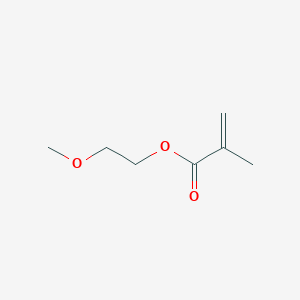-
Categories
-
Pharmaceutical Intermediates
-
Active Pharmaceutical Ingredients
-
Food Additives
- Industrial Coatings
- Agrochemicals
- Dyes and Pigments
- Surfactant
- Flavors and Fragrances
- Chemical Reagents
- Catalyst and Auxiliary
- Natural Products
- Inorganic Chemistry
-
Organic Chemistry
-
Biochemical Engineering
- Analytical Chemistry
- Cosmetic Ingredient
-
Pharmaceutical Intermediates
Promotion
ECHEMI Mall
Wholesale
Weekly Price
Exhibition
News
-
Trade Service
Recently, Smithers released a special research report "The future of the single-material plastic packaging film market in 2025 " and pointed out that from 2015 to 2019 , the global single-material plastic packaging film market has a compound annual growth rate of 3.
Recently, Smithers released a special research report "The future of the single-material plastic packaging film market in 2025 " and pointed out that from 2015 to 2019 , the global single-material plastic packaging film market has a compound annual growth rate of 3.
The latest research shows that under the influence of policies and the concept of sustainable development, the use of a single material in packaging has been increasingly valued.
Huangshan Yongxin's single material packaging solutionHuangshan Yongxin's single material packaging solutionHuangshan Yongxin's single material packaging solution
As a leader in the domestic flexible packaging industry, Huangshan Yongxin actively responded to the "Packaging 2025 " strategy and developed a series of sustainable packaging solutions.
As a leader in the domestic flexible packaging industry, Huangshan Yongxin actively responded to the "Packaging 2025 " strategy and developed a series of sustainable packaging solutions.
Coveris Coveris launches single-material packaging with a focus on sustainabilityLaunched single-material packaging with a focus on sustainable developmentLaunched single-material packaging with a focus on sustainable development
Coveris in 2019 year FachPack Congress launched an alternative product of a single material for dry pet food packaging, including snacks and snacks.
Coveris in 2019 year FachPack Congress launched an alternative product of a single material for dry pet food packaging, including snacks and snacks.
In addition, the Monoflex ES version developed in cooperation with Dow Chemical also contains a layer of PE film, but is also coated with a special OPULUX TM HGT coating on top.
In addition, the flexible packaging giant also launched PE+ , an innovative recyclable film designed for retail packaging applications.
At present, it can be used in various forms of filling and sealing form, and it is a sustainable substitute for OPP plastics (such as microwave-processable fresh food).
Coveris also demonstrated its recyclable technology for palletized products.
Types of single-material plastic packaging filmsTypes of single-material plastic packaging filmsTypes of single-material plastic packaging films
Polyethylene ( PE ) is currently the most widely used , accounting for 50% of the global single-material plastic packaging film market share in 2020 ; polypropylene ( PP ) is the second largest category, with a global market share of 41.
Polyethylene ( PE ) is currently the most widely used , accounting for 50% of the global single-material plastic packaging film market share in 2020 ; polypropylene ( PP ) is the second largest category, with a global market share of 41.
It is predicted that from 2020 to 2025 , the market consumption of PP single-material films will have explosive growth.
The main factors affecting the single material marketThe main factors affecting the single material marketThe main factors affecting the single material market
1.
1.
Beginning in the European Union, more and more countries and brand companies worldwide have promoted circular economy as an important factor affecting the application of recyclable single-material plastic packaging.
This initiative aims to improve the efficiency of plastic recycling and processing.
Beginning in the European Union, more and more countries and brand companies worldwide have promoted circular economy as an important factor affecting the application of recyclable single-material plastic packaging.
This initiative aims to improve the efficiency of plastic recycling and processing.
The new crown pneumonia epidemic has severely restricted the growth of the global economy in 2020 .
But research earlier this year showed that flexible packaging consumption has shown a reverse growth in 2020 , especially in Europe and North America.
But research earlier this year showed that flexible packaging consumption has shown a reverse growth in 2020 , especially in Europe and North America.
The new crown pneumonia epidemic has severely restricted the growth of the global economy in 2020 .
But research earlier this year showed that flexible packaging consumption has shown a reverse growth in 2020 , especially in Europe and North America.
2.
Barrier
BarrierBarrier
In 2019 , single-material plastics accounted for 68.
6% of global flexible plastic packaging film production .
Compared with 2015 , this market share has declined slightly.
It reflects the market's desire for packaging materials with softer structures and higher barrier properties to replace rigid plastic packaging.
6% of global flexible plastic packaging film production .
Compared with 2015 , this market share has declined slightly.
It reflects the market's desire for packaging materials with softer structures and higher barrier properties to replace rigid plastic packaging.
In 2015, single-material plastics accounted for 68.
6% of the global output of flexible plastic packaging films .
Compared with 2015 , this market share has declined slightly.
It reflects the market's desire for packaging materials with softer structures and higher barrier properties to replace rigid plastic packaging.
According to the difference in sealing strength and barrier properties, a single material structure cannot meet the requirements of all applications.
Overcoming these limitations has also become the focus of research and development of related companies, and new and innovative products are constantly being introduced to the market.
For example, Nestlé and Amcor announced the development of a recyclable single-material PP/OPP bag for pet food in late September this year .
Overcoming these limitations has also become the focus of research and development of related companies, and new and innovative products are constantly being introduced to the market.
For example, Nestlé and Amcor announced the development of a recyclable single-material PP/OPP bag for pet food in late September this year .
According to the difference in sealing strength and barrier properties, a single material structure cannot meet the requirements of all applications.
Overcoming these limitations has also become the focus of research and development of related companies, and new and innovative products are constantly being introduced to the market.
For example, Nestlé and Amcor announced the development of a recyclable single-material PP/OPP bag for pet food in late September this year .
From 2020 to 2025 , single-material flexible packaging will continue to gain market share from those multi-material packaging films used in some low- and medium-barrier bags.
People will see more and more single-material packaging using dehydrated food, detergent and dry pet food.
However, in the field of liquid packaging, single-material packaging bags are still more difficult to intervene.
People will see more and more single-material packaging using dehydrated food, detergent and dry pet food.
However, in the field of liquid packaging, single-material packaging bags are still more difficult to intervene.
From 2010 to 2025 , single-material flexible packaging will continue to gain market share from those multi-material packaging films used in some low- and medium-barrier bags.
People will see more and more single-material packaging using dehydrated food, detergent and dry pet food.
However, in the field of liquid packaging, single-material packaging bags are still more difficult to intervene.
3.
Packaging design for easy recycling
Packaging design for easy recyclingRecyclable packaging design
Good recycling design improves the quality of recycled plastics, which in turn increases the use of recycled plastics and expands its application areas.
This is becoming a direct consideration for all packaging designs, including coated plastic and multilayer material packaging.
In order to achieve complete recyclability, ideally, all the different layers should be made of a single material (such as polyolefin).
This is becoming a direct consideration for all packaging designs, including coated plastic and multilayer material packaging.
In order to achieve complete recyclability, ideally, all the different layers should be made of a single material (such as polyolefin).
Good recycling design improves the quality of recycled plastics, which in turn increases the use of recycled plastics and expands its application areas.
This is becoming a direct consideration for all packaging designs, including coated plastic and multilayer material packaging.
In order to achieve complete recyclability, ideally, all the different layers should be made of a single material (such as polyolefin).
From a printing point of view, how to improve the design and reduce the amount of ink used is also a factor considered in packaging design.
The easiest packaging to recycle is those that use less ink.
Especially for those packages that use a small amount of colored ink.
Because colored plastic packaging is mixed together, it will produce a dirty green when it is recycled.
The use of such green renewable raw materials is limited, which reduces the value of recycling.
The easiest packaging to recycle is those that use less ink.
Especially for those packages that use a small amount of colored ink.
Because colored plastic packaging is mixed together, it will produce a dirty green when it is recycled.
The use of such green renewable raw materials is limited, which reduces the value of recycling.
From a printing point of view, how to improve the design and reduce the amount of ink used is also a factor considered in packaging design.
The easiest packaging to recycle is those that use less ink.
Especially for those packages that use a small amount of colored ink.
Because colored plastic packaging is mixed together, it will produce a dirty green when it is recycled.
The use of such green renewable raw materials is limited, which reduces the value of recycling.
Reducing printed graphics is feasible for some branded products.
However, it is in conflict with those marketing needs that rely on packaging colors on supermarket shelves to attract consumers' attention.
However, it is in conflict with those marketing needs that rely on packaging colors on supermarket shelves to attract consumers' attention.
Reducing printed graphics is feasible for some branded products.
However, it is in conflict with those marketing needs that rely on packaging colors on supermarket shelves to attract consumers' attention.
The blank of recyclability design is the core factor of high recycling cost and high recycling cost.
Product design only pays attention to functionality and not recyclability.
Single materialization is just a concept.
For example, take-out meal boxes and express packaging are all composite materials, and it is difficult to form a closed loop.
The recyclability design is a large system.
There are both a single-variety recyclability system and a recyclability design for each subdivision application field, such as plastic film, catering packaging, and flexible packaging.
Product design only pays attention to functionality and not recyclability.
Single materialization is just a concept.
For example, take-out meal boxes and express packaging are all composite materials, and it is difficult to form a closed loop.
The recyclability design is a large system.
There are both a single-variety recyclability system and a recyclability design for each subdivision application field, such as plastic film, catering packaging, and flexible packaging.
The blank of recyclability design is the core factor of high recycling cost and high recycling cost.
Product design only pays attention to functionality and not recyclability.
Single materialization is just a concept.
For example, take-out meal boxes and express packaging are all composite materials, and it is difficult to form a closed loop.
The recyclability design is a large system.
There are both a single-variety recyclability system and a recyclability design for each subdivision application field, such as plastic film, catering packaging, and flexible packaging.
There is a lack of complete standards, certifications, policies, and legal systems in the entire system of plastic design, production, circulation, disposal, recycling, and recycling.
There is a lack of complete standards, certifications, policies, and legal systems in the entire system of plastic design, production, circulation, disposal, recycling, and recycling.







